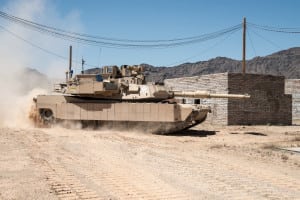
Leonardo DRS is readying to complete deliveries of the Trophy Active Protection System (APS) program for Army Abrams tanks by the end of year, while pursuing continued interest in an updated, lighter version of the system with a new characterization event set for mid-2021. “We’re wrapping up those deliveries now. It’s been a yearlong rapid production process since the directed requirement in 2016 to outfit four brigades of Abrams with Trophy APS capability,” Mike O’Leary, Leonardo DRS Land Systems’ senior…

 By
By 











